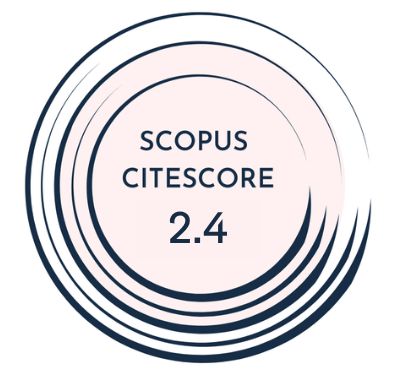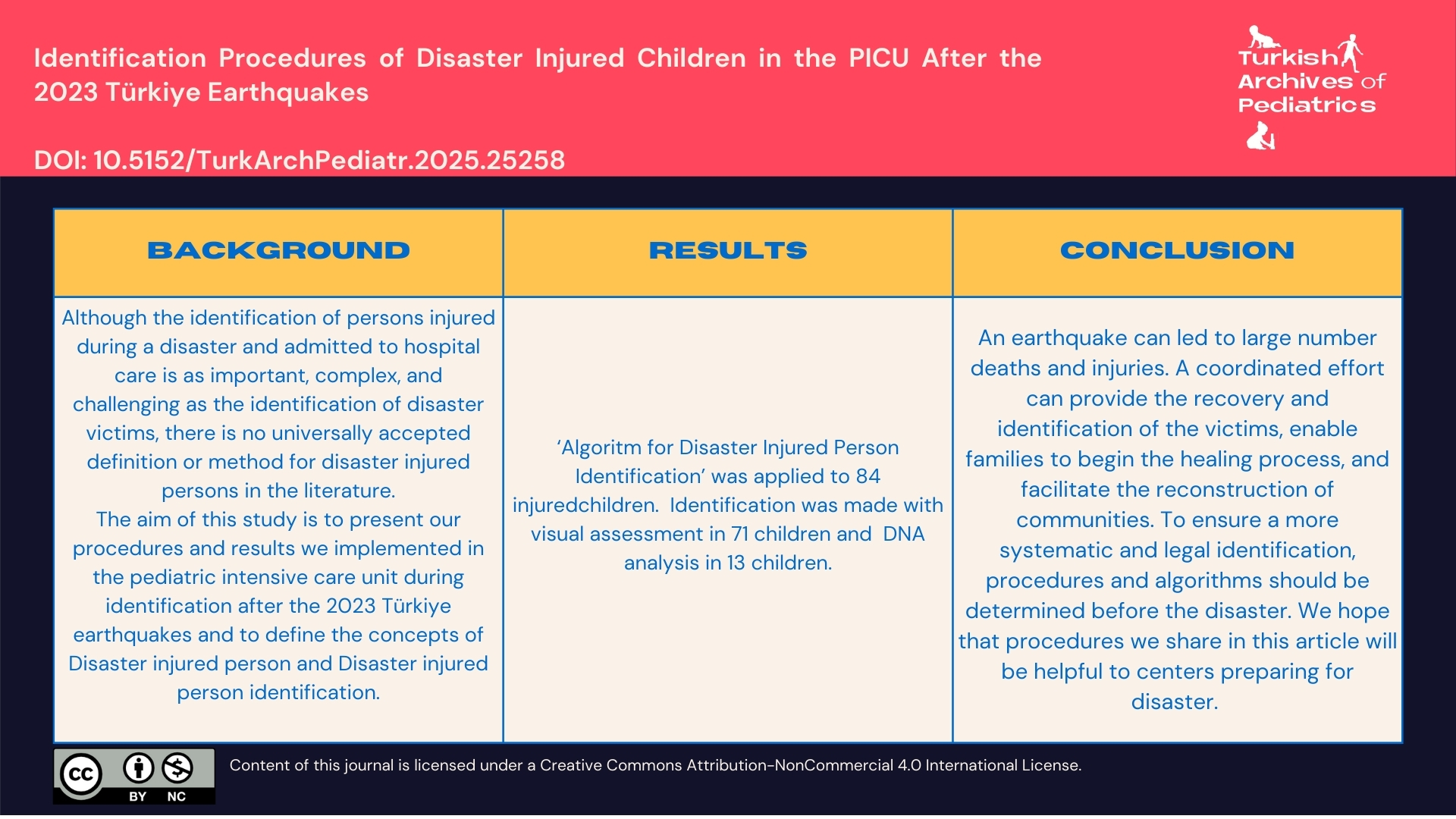Objective: In the literature, there is a disaster victim identification protocol published by Interpol for people who died during disasters. There are publications on earthquake-related demographic data, diagnosis, treatment, and mortality for disaster-injured persons (DIPs). However, there is no universally accepted definition or method for disaster-injured person identification (DIPI). The aim of this study is to present the procedures and results that were implemented in the pediatric intensive care unit during identification after the 2023 Türkiye earthquakes and to define the concepts of DIP and DIPI.
Materials and Methods: This study was conducted with 84 children who were admitted to pediatric intensive care unit between February 6 and 28, 2023. Patients’ information was obtained from the electronic health records system. Information on identification procedures applied to children was obtained from the social services records.
Results: “Procedure for children brought to the Adana City Training and Research Hospital who are able to provide a statement” and “Procedure for children brought to the hospital who, due to young age or adverse health conditions, are unable to provide a statement” were applied for identification. Identification was made with visual assessment in 71 children and DNA analysis in 13 children.
Conclusion: Identification is a complex process involving a physician, social services specialist, law enforcement, and prosecutor. Physicians must be knowledgeable about identification. To ensure a more systematic and legal identification, procedures and algorithms should be determined before the disaster. The hope is that procedures that are shared in this article will be helpful to centers.
Cite this article as: İrday K, Arslan İ. Identification procedures of disaster-injured children in the pediatric intensive care unit after the 2023 Türkiye earthquakes. Turk Arch Pediatr. 2025;60(6):622-631.



.png)


